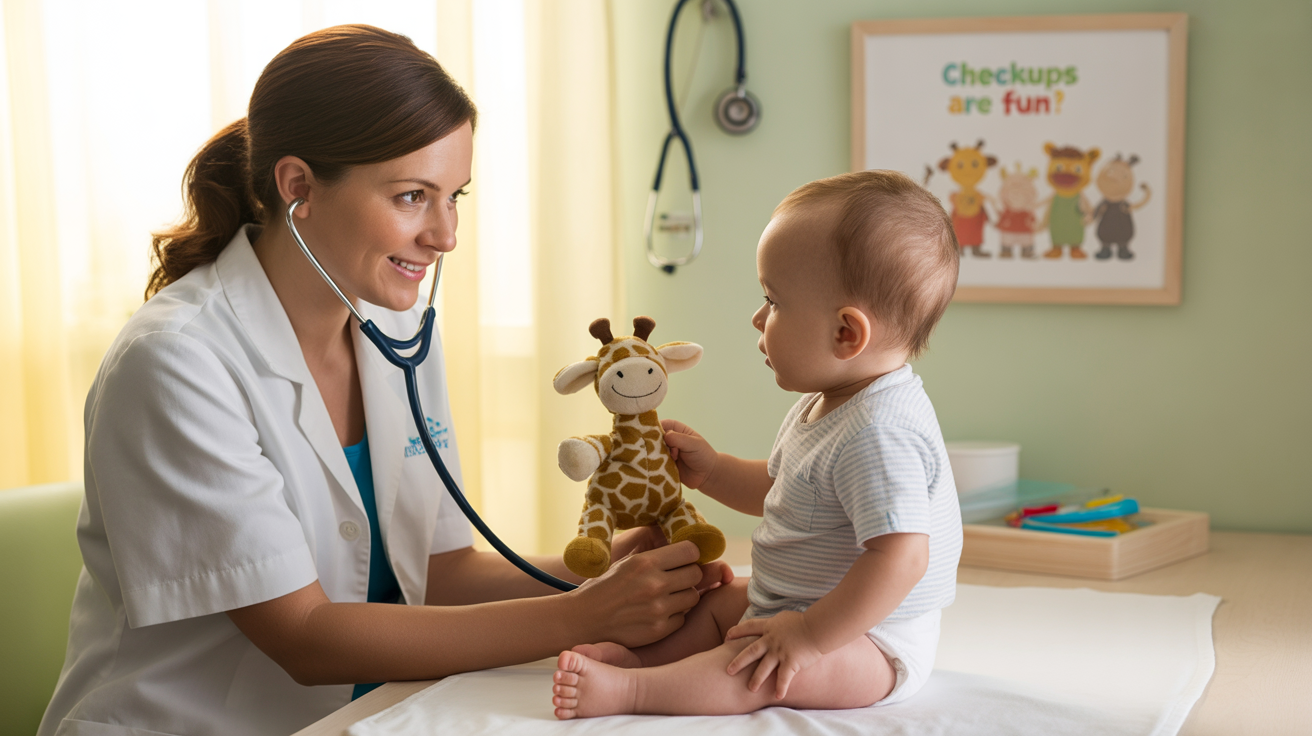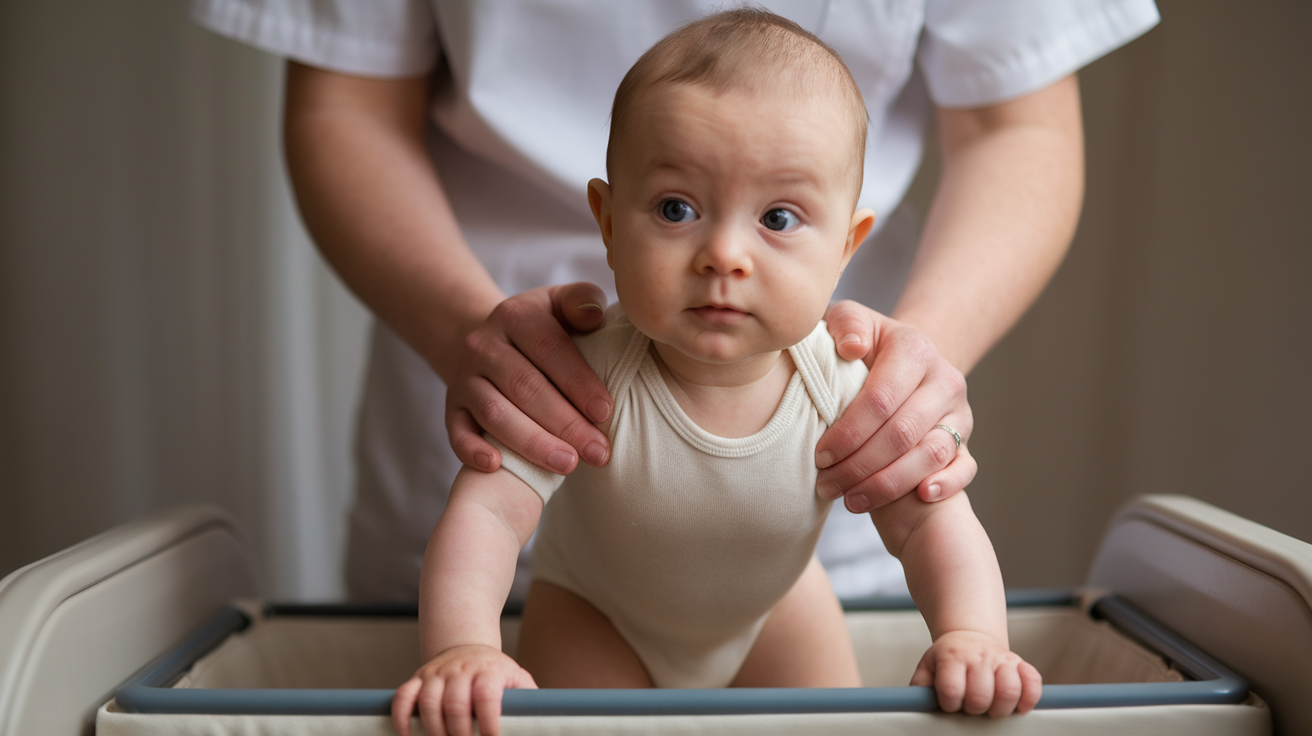Understanding the Positive Support Reflex in Infants

Infant reflexes represent some of the most important aspects of early human development, serving as primitive yet essential neurological responses that help newborns adapt to life outside the womb.
These automatic movements and responses provide crucial insights into a baby’s neurological health and developmental progress.
Among the numerous reflexes present at birth, the positive support reflex stands out as a particularly important indicator of normal neuromuscular development, serving as a valuable tool for healthcare professionals in assessing infant well-being.
The positive support reflex, also known as the standing reflex or bearing weight reflex, demonstrates an infant’s innate ability to bear weight on their legs when supported in an upright position.
This reflex plays a crucial role in the early stages of motor development, providing healthcare providers with essential information about the infant’s nervous system integrity and muscular coordination.
What is the Positive Support Reflex?
Newborn babies have an incredible built-in trick that surprises parents everywhere! It’s called the positive support reflex, and it works like magic.
When you hold a baby upright and their feet touch the ground, special sensors in their feet send lightning-fast messages to their spinal cord.
Without even thinking about it, their leg muscles automatically straighten, making them look as if they’re trying to stand. This great reflex is actually their brain and body practicing for walking later on.
Doctors love checking this reflex because it indicates that a baby’s nervous system is functioning properly and developing as it should.
Importance of Positive Support Reflex in Infant Development

The positive support reflex plays a fundamental role in early neuromuscular development and serves as a critical assessment tool for healthcare professionals.
Role in Motor Skill Development
- Muscular Foundation Development: The positive support reflex strengthens leg, hip, and core muscles, creating the foundation for sitting, crawling, and walking milestones.
- Proprioception Enhancement: The reflex develops the body’s ability to sense position and movement in space, helping infants understand their relationship with gravity.
- Neural Pathway Formation: Repeated activation during caregiving creates muscle memory and neural pathways supporting complex motor behaviors and locomotion.
Indicators of Neurological Health
- Peripheral Nervous System Assessment: The reflex evaluates nerve connections between the brain, spinal cord, muscles, and sensory organs, indicating proper function.
- Central Nervous System Evaluation: Assesses brain and spinal cord health through coordinated processing between multiple neurological components.
- Baseline Establishment: Regular pediatric assessments help healthcare providers establish individual developmental baselines for each infant.
This reflex not only contributes to the physical preparation for future motor milestones but also provides valuable insights into the infant’s neurological health and developmental trajectory.
How to Assess the Positive Support Reflex in Infants
Assessing the positive support reflex requires proper technique and safety measures to ensure accurate results while protecting the infant from injury.
- Professional Supervision Required: Assessment must be performed by trained healthcare professionals or under direct supervision to ensure safety and accuracy.
- Optimal Infant State: Begin with the infant in a calm, alert state, as stress or fatigue can affect reflex responses.
- Proper Positioning: The examiner holds the infant under the arms with a secure but non-restrictive grip, positioning them upright with head support if needed.
- Developmental Timeline: The reflex appears around 35 weeks of gestational age, is well-established at birth in full-term infants, and varies in premature infants.
- Peak Response Period: Strongest and most easily elicited during the first few weeks of life, most pronounced from birth to 2 months of age.
- Standard Integration: Begins to diminish at 3-4 months as higher brain centers develop voluntary motor control, with integration largely complete by 6 months.
- Clinical Significance: Persistent strong reflexes beyond the expected timeline may indicate delayed development, while the premature disappearance of reflexes suggests other concerns.
This evaluation provides valuable information about the infant’s neurological development and helps identify any potential concerns early in the developmental process.
Common Issues with the Positive Support Reflex

Abnormalities in the positive support reflex can indicate various neurological and developmental concerns that require careful evaluation and potential intervention.
Early identification of these issues enables healthcare providers to initiate appropriate assessments and interventions, thereby optimizing infant developmental outcomes.
1. Absent or Weak Reflex Response
Complete absence of the positive support reflex in full-term infants may suggest significant neurological dysfunction affecting sensory pathways, spinal cord processing, or motor output systems.
Weak or inconsistent responses can indicate hypotonia, decreased muscle tone, or peripheral nerve problems that may impact normal motor development and require further neurological evaluation.
2. Asymmetrical Reflex Patterns
Unequal responses between legs, where one extends normally while the other remains flexed or responds weakly, can indicate unilateral neurological problems such as nerve injuries, muscle weakness, or central nervous system lesions.
This asymmetry is particularly concerning as it may lead to developmental imbalances and requires early intervention to prevent long-term complications.
3. Hyperactive or Persistent Reflexes
Excessively strong reflexes or those persisting beyond the normal integration timeline may indicate increased muscle tone, hyperreflexia, or conditions like cerebral palsy.
Scissoring patterns, where legs cross during the reflex, can suggest increased adductor muscle tone and abnormal movement control requiring specialized assessment.
4. Premature Reflex Integration
Early disappearance of the reflex before the expected timeline may suggest accelerated neurological development or other developmental concerns that warrant monitoring.
This pattern requires careful evaluation to determine if it represents normal variation or indicates underlying neurological issues.
5. Clinical Assessment and Intervention Needs
Reflex abnormalities must be interpreted within the context of overall development, birth history, and clinical findings, as single abnormal findings are rarely diagnostic alone.
Early detection through careful assessment enables prompt specialist referrals and early intervention services that can significantly improve long-term developmental outcomes and prevent complications.
Key Takeaways
The positive support reflex is a fundamental component of infant neurological assessment, providing valuable insights into early motor development and nervous system function.
The significance of early reflex evaluation cannot be overstated in promoting optimal infant health and development.
The reflex demonstrates the advanced interplay between sensory input, spinal cord processing, and motor output that forms the foundation for all future motor learning and development.
Have you observed the positive support reflex in your infant? Comment below to share your experiences or ask questions about infant development. Our community is here to support you!
Frequently Asked Questions
At What Age Does the Positive Support Reflex Disappear?
The positive support reflex typically disappears around 2 months of age as voluntary motor control develops and higher brain centers begin to override automatic reflex responses.
How Can I Tell if My Baby’s Reflexes Are Normal?
Normal reflexes appear at expected times, show appropriate strength and duration, and disappear according to typical developmental timelines.
What Is the Importance of Reflexes in Infant Health?
Reflexes provide valuable information about neurological development, helping healthcare providers assess the maturation of the central nervous system.






